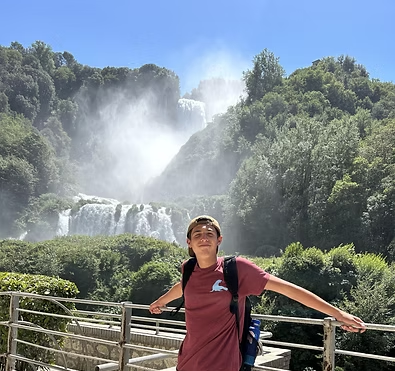Garden visitors
- Sydney Hanson
- Aug 3, 2021
- 3 min read

While our pollinator friendly garden often provides food for our honey bees, it is also a gathering place for various other pollinators in our area. Bumblebees, ants, grasshoppers, flies, and other flying or crawling critters can be seen in and around the bee yard every day. In the grass around the hives and garden beds, you don’t need to walk far to disturb a couple grasshoppers hiding among the grass, clover, and crown vetch. On the flatter, more open flowers tiny ants can be seen searching for something something to eat. Drone flies, a type of fly named for their striking resemblance to the bees that they mimic, can sometimes be seen around our hives. Dragonflies can be found occasionally flying around the hives hunting

for an unsuspecting bee or other insect to turn into their dinner. Many kinds of flies can be found flitting around the hives and garden looking for anything living or dead, flora or fauna to eat. We have even seen a golden backed snipe-fly in our garden!

Golden backed Snipe-flies are intriguing because we don’t know a lot about them. Some say that they are carnivorous, but since they’ve been seen on various kinds of flowers there is some argument that they may be omnivores. We also don’t know where they lay their eggs. There is some thought that they lay their eggs near water which would make their presence in the garden reasonable since we are situated fairly close to a creek and some marshy land behind the apiary. Thus making our little garden a perfect place for these flies to find both carnivorous and herbivorous food sources and to be potentially able to reproduce.


As far as bumblebee visitors we see, there is quite the variety. Ranging from the American bumblebee to carpenter bees to Perplexing Bumblebees, there is quite the variety of bees that come to visit our gardens. While our honeybees do greatly enjoy the potential food sources of our pollinator friendly garden, it also helps us to support our native bee species.
Having a variety of flowering plants is important for several reasons. It offers nutritional diversity for native pollinators and our honey bees. Some pollinators are selective in what pollen they will harvest and eat, but for most bees they need a variety of pollen options, as not all plants have the same nutritional value in their pollen. Imagine only eating one food that's not very nutritious for most of your life, like macaroni and cheese. While that may sound like the best idea on the planet, it wouldn't take very long for your body to tell you that eating mac n cheese every day isn't the best choice you could make. Additionally, different kinds of bees have different mouthparts. So while one bee may easily access pollen and nectar tucked away deep into the flower, another may not be able to reach their tongue quite far enough. Not only can their mouth construction cause potential complications for the native bees, some bees are too small to get into certain flowers and thus are excluded from some plants based on size. Since different species have different needs even just in how far they can reach for food, having a variety of types/shapes of flowers provides options to more readily allow many local bugs to access the food they need and thus do their vital work of pollination.
While you often hear “save the bees” in reference to

honeybees, its often our native pollinators who are truly at risk as they are not well managed or closely observed, and thus its much harder for us to truly know how they are doing individually as well as how they are doing as a whole.

Maybe next time you walk by a flowering plant you should look a little closer to see the true variety of pollinators that are paying it a visit. Not every ball of black and yellow fuzz is a honey bee and attempting to identify the various bees, flies, and beetles you may see can turn into a rather rewarding information scavenger hunt.
Information on Golden Backed Snipe-Flies from: OSU's "Snipe Hunting" by Joe Boggs https://bygl.osu.edu/node/1295




Comments